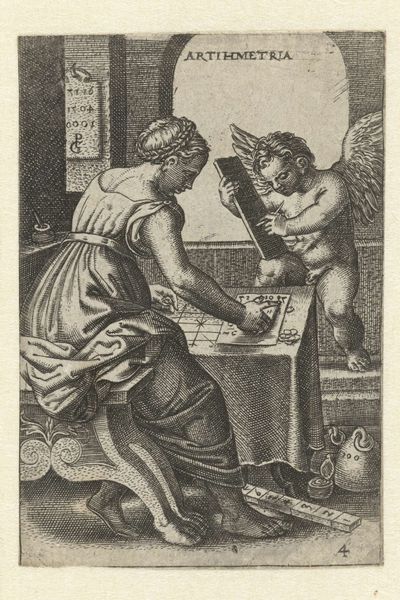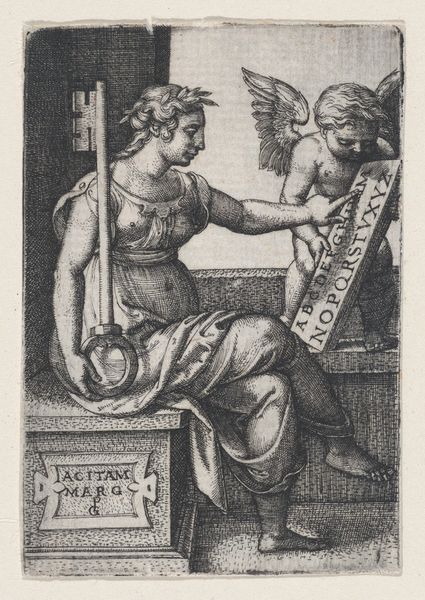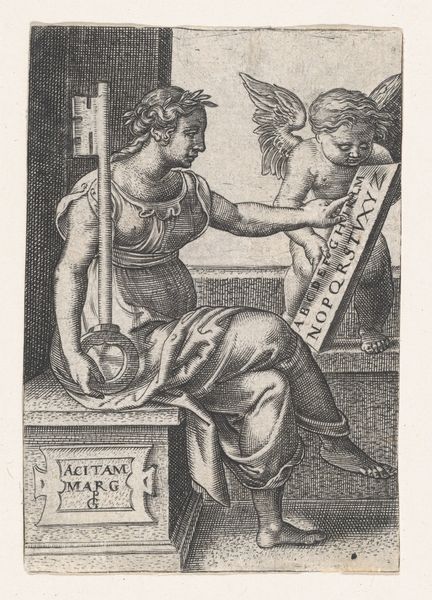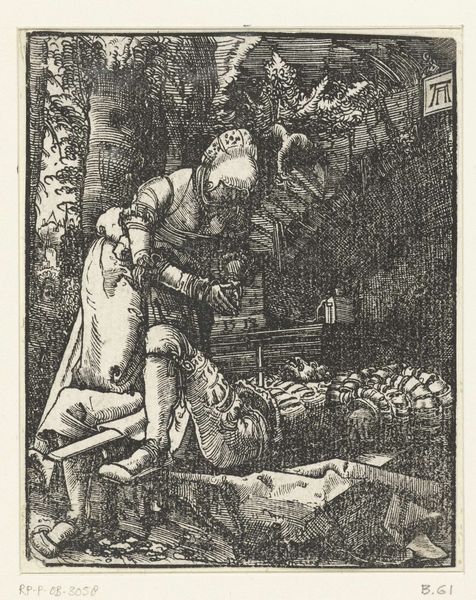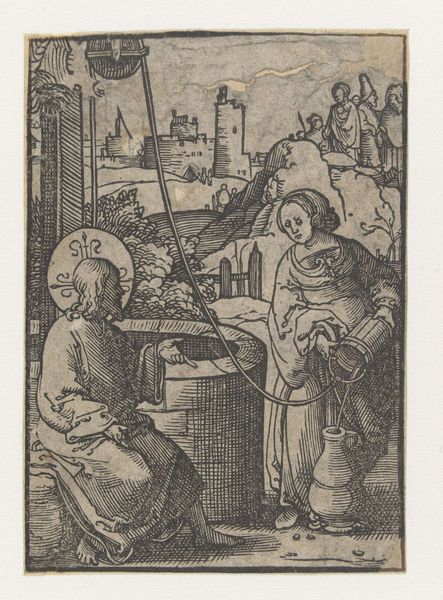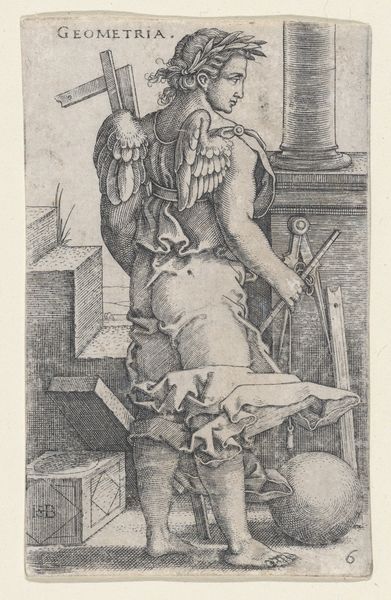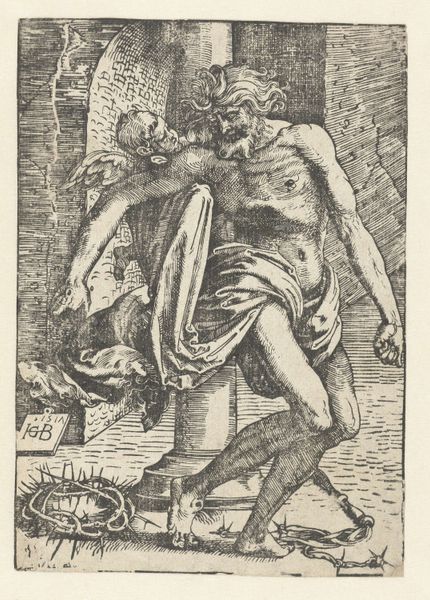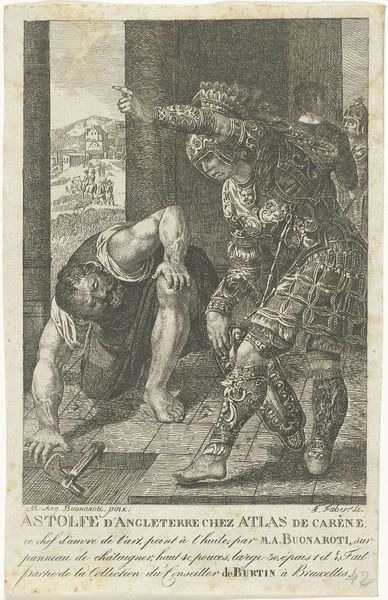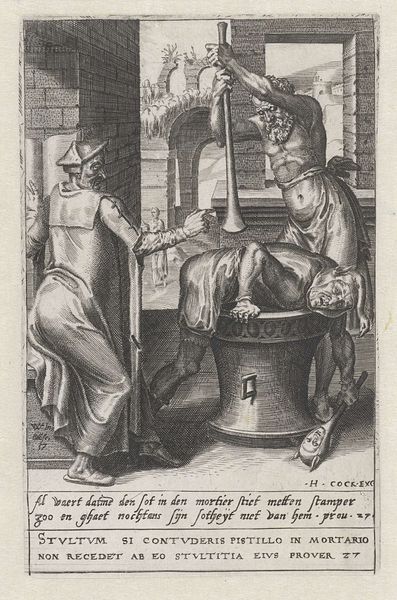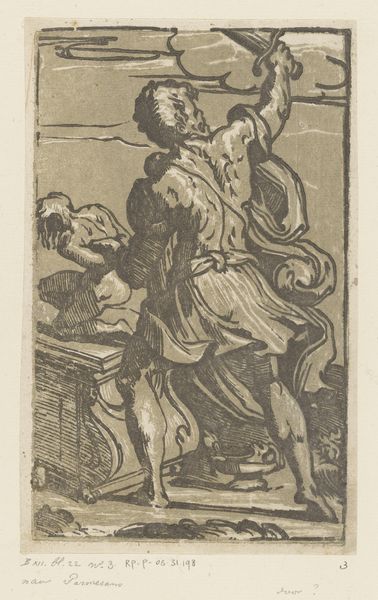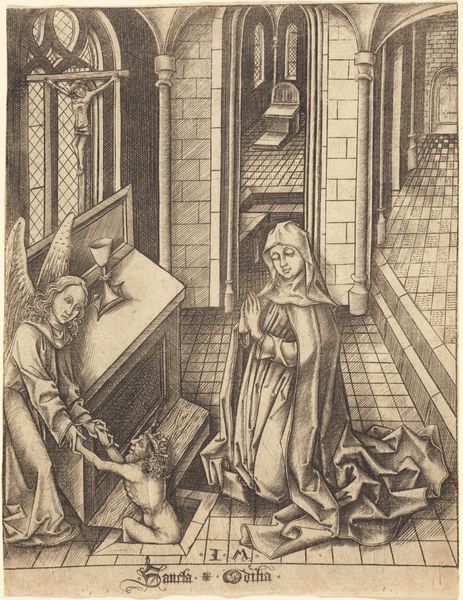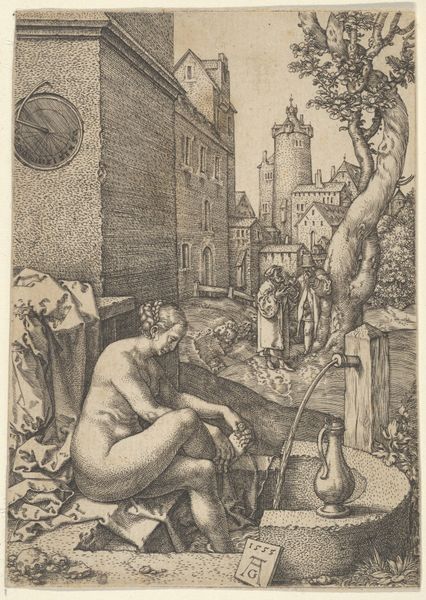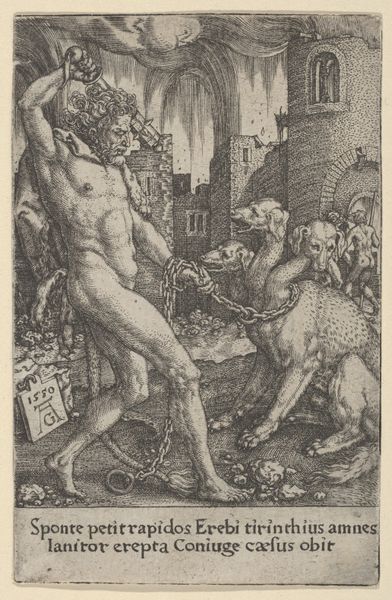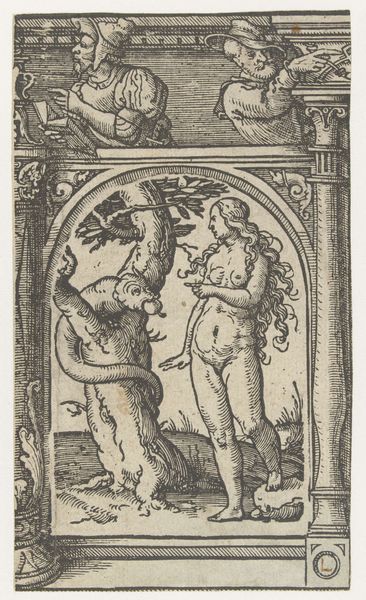
drawing, print, engraving
#
drawing
#
allegory
# print
#
old engraving style
#
figuration
#
history-painting
#
northern-renaissance
#
engraving
Dimensions: Sheet: 2 15/16 × 1 15/16 in. (7.4 × 5 cm)
Copyright: Public Domain
Editor: Here we have Georg Pencz's "Arithmetica" from around 1536-1546, an engraving on paper. I’m struck by the level of detail achievable with engraving and how it elevates a seemingly practical subject like arithmetic. What stands out to you about this piece? Curator: Well, let's consider the means of its production. This wasn't just about illustrating arithmetic, it was about demonstrating the engraver's skill, about *labor* as a virtue. Think about the repetitive, precise work involved in creating these fine lines. And, significantly, consider that this image was *printed*. Editor: Ah, like a reproducible tool? Curator: Precisely. This print makes knowledge about arithmetic accessible. It links craft to intellectual pursuits. How does the Northern Renaissance context play into this, you think? It's after the Reformation; what new values were emerging? Editor: Perhaps it signifies a shift towards tangible, useful knowledge, away from purely religious doctrine. The engraving makes the information easily distributed, encouraging a kind of democratic access to education, focusing on mathematics’ use in emergent global commerce? Curator: Interesting point. So the act of distributing becomes central. Consider how materials and the labor surrounding this image directly influence the value associated with knowledge itself, especially practical knowledge. Even its display is considered. Editor: This has completely changed how I see the image; it's not just a depiction of arithmetic but an artifact of cultural and economic shifts. Curator: Exactly. Pencz shows the increasing integration of material processes in culture. Hopefully we’ll be using it as a lens to scrutinize the underpinnings of art creation!
Comments
No comments
Be the first to comment and join the conversation on the ultimate creative platform.
